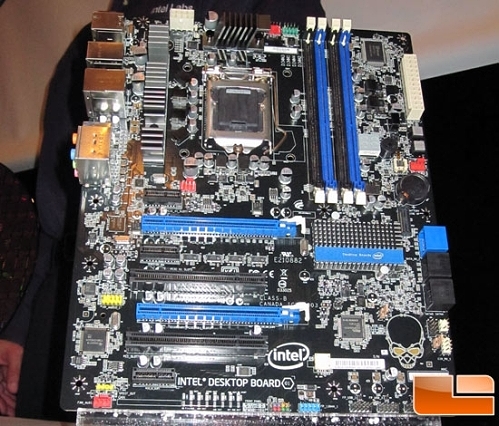In terms of GPU support, the Intel DP67BG features two PCI-Express 2.0 x16 slots, meaning Nvidia SLI and AMD CrossFireX configurations are possible, but only if licensing agreements are agreed upon between Intel and the two GPU giants. The board also features three PCI-Express x1 slots and two PCI slots. Last month, our friend Lars-Göran Nilsson from SemiAccurate explained that Intel's next generation consumer desktop chipsets will lack native support for the PCI bus, which dates back to 1993. Instead of native designs, chip makers will be selling PCI Express to PCI bridge chips for manufacturers to include in their chipset designs. Not only does this spell high profit for third-party suppliers, it also might raise the total bill-of-materials costs on these boards to numbers that may discourage manufacturers from producing large quantities of P67, H67 and H61 products. While the outcome of total expenses remains inconclusive per established Intel partner in the retail channel, it's an important trend to keep in mind as the industry continues to sail through the second half of 2010.

Intel P67 DP67BG 'Burrage' motherboard - LegitReviews
At the bottom of the Intel DP67BG are three internal USB 2.0 headers and a single Firewire 1394a header in blue. LegitReviews believes the board will have a total of fourteen USB 2.0 ports, six internal and four external. In contrast, Intel has decided to use external headers for its two SuperSpeed USB 3.0 ports powered by a NEC USB 3.0 controller chip placed just below the top PCI Express x16 slot. We have reason to believe this external design could be a result of many chipset manufacturers not having passed USB Implementers Forum (USB-IF) certification on their products. According to recent talks from several Taiwan-based motherboard manufacturers, the fact that Windows 7 does not natively support SuperSpeed USB 3.0 technology requires design houses to develop their own USB 3.0 software, resulting in delays of mass shipment schedules.
On the left side of the Intel DP67BG are four black-colored SATA II 3Gbps ports and two blue-colored SATA III 6Gbps ports. As mentioned back in June, bit-tech believes the "7" in "P67" signifies native support for SATA 6Gbps and RAID, as the number can be referenced to H55 and H57 chipsets. As far as memory channels are concerned, the board features two sets of dual-channel DDR3 memory slots, most likely supporting P67 chipset standard speeds of DDR3 1333MHz. Not much is known about the PWM design of Intel's board, but the images reveal a single 8-pin +12V power connector just above the CPU socket along with all solid-state capacitors.
More pictures can be found at LegitReviews.




